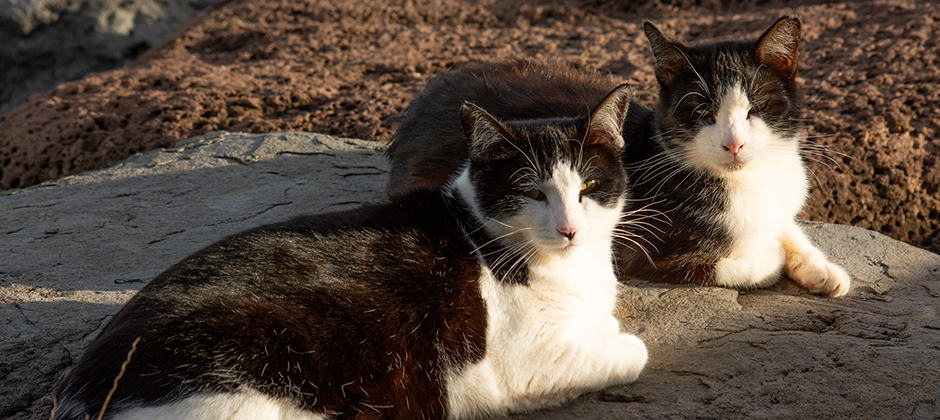Share this article
Better collaboration needed to tackle pervasive cat disease
Wildlife managers, doctors and veterinarians need to collaborate more to get ahead of toxoplasmosis — a zoonotic disease originating in felines — which affects vast numbers of humans, domestic animals, as well as endangered wildlife, according to a new review.
“From the food we eat to the animals and ecosystems we interact with, Toxoplasma gondii is impossible for humans to avoid,” said Caroline Murphy, TWS Government Relations Manager and a co-author on the review published recently in EcoHealth.
Toxoplasmosis comes from the parasite Toxoplasmosa gondii, a protozoan with a complex life cycle relying on all felines including domestic cats (Felis catus) as primary hosts to spread the disease to other warm-blooded animals.
The protozoan reproduces in cat guts, and sheds oocysts — the protozoan’s reproductive stage — through the cats’ feces. The oocysts enter secondary hosts through oral contact — in humans this could be through touching your face after changing kitty litter or eating unwashed produce contaminated with oocysts. In wildlife this could be through consumption of an already infected secondary host or through direct contact with oocysts in the environment. All warm-blooded animals are capable of getting infected, including white-tailed deer (Odocoileus virginianus) Hawaiian geese (Branta sandvicensis) and the endangered Hawaiian monk seal (Monachus schauinslandi), whose populations have been heavily impacted by the disease.
The parasite then gets back to cats when felines eat the tissue of infected animals. Some research even shows that the disease affects the behavior of rats, making them bolder and easier to catch. Humans and other animals can also contract the parasite by eating undercooked meat from secondary hosts.
Some of the known effects of the disease among humans include damage to the brain, eyes or other organs. If pregnant women are infected during the first trimester, the fetus can develop severe birth defects, according to the Center for Disease Control and Prevention and others.
Feral cats are particularly affected by toxoplasmosis. One program in the greater Cleveland area that traps, neuters and releases cats found that 52% of cats brought in tested positive for the disease.
Programs like this, which are meant to stop the spread of feral cats, do little good when it comes to this disease, since infected individuals are rereleased into the environment, Murphy said.
The review on toxoplasmosis uses a One Health approach, which involves the integration of human health physicians, scientists and veterinarians. This project was started in 2016 when the American Bird Conservancy brought together experts from a variety of backgrounds to examine the toxoplasmosis problem.
Dealing with the sheer number of feral and free-ranging cats out in the landscape is one solution to the problem, but it’s complicated by a lack of funding and coordination at both local and federal levels, researchers found.
“If the township doesn’t want to deal with it, if the state doesn’t want to deal with it, the cats are left in a jurisdictional limbo, and organizations that maintain their persistence on the landscape pop up as a result.” Murphy said.
Animal rights organizations that trap, neuter and release cats fail to manage feral cat populations, Murphy said, and advocacy organizations have helped shut down U.S. Department of Agriculture research into the spread of the disease from cats to humans and livestock.
“A reimagining of how we think about this issue is required if we are to deal with the impacts of the parasite and its prevalence among human, wildlife and captive animal populations,” she said. “This reimagining should begin with a hard look at how the disease is spread in many human environments — feral and free-ranging cats.”
Read TWS’ issue statement and fact sheet on feral and free-ranging domestic cats.
Header Image: Feral and free-ranging cats, like these cats at Hawaii’s Kakaako Park, are responsible for transmitting toxoplasmosis among humans and wildlife. ©Daniel Ramirez








